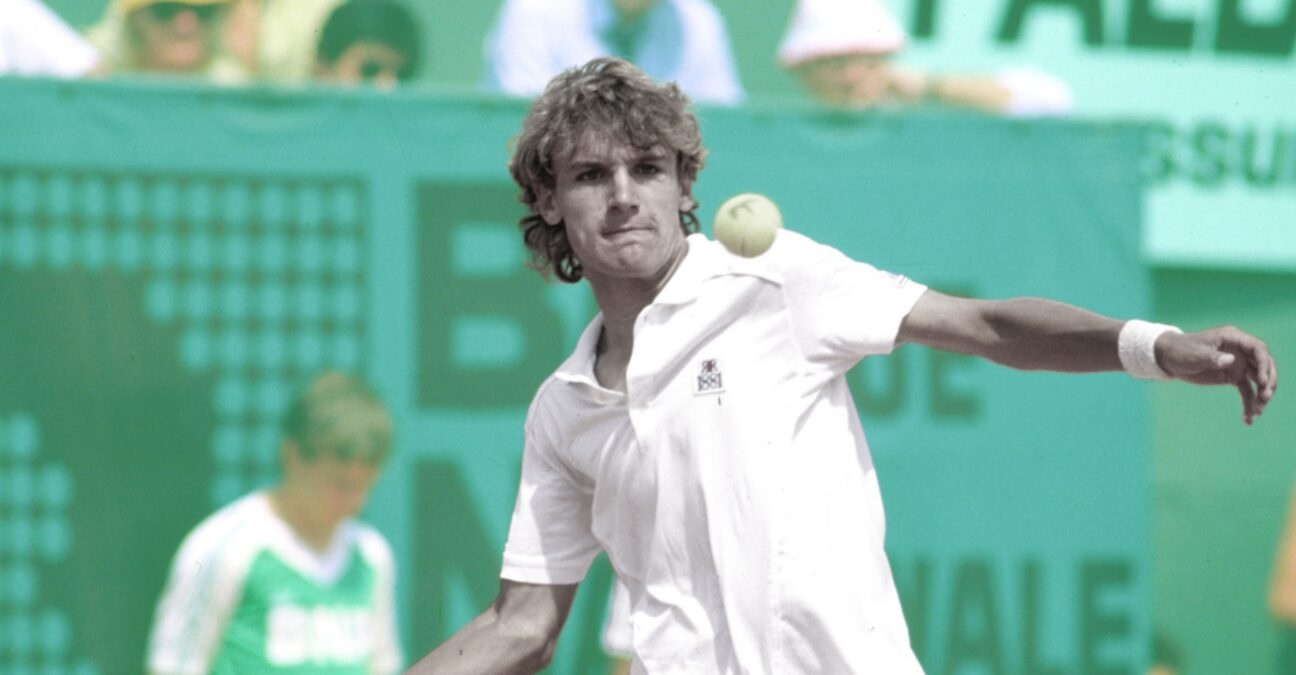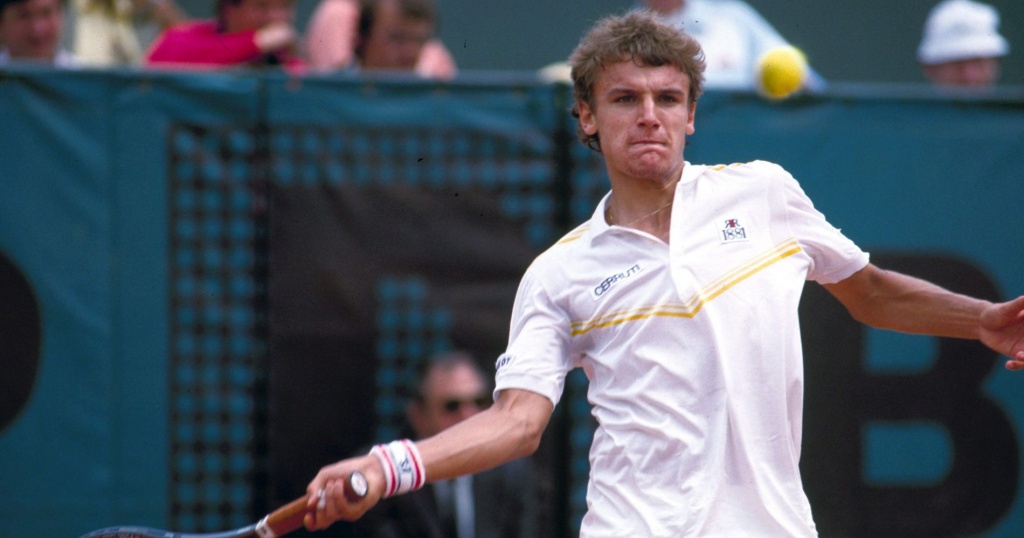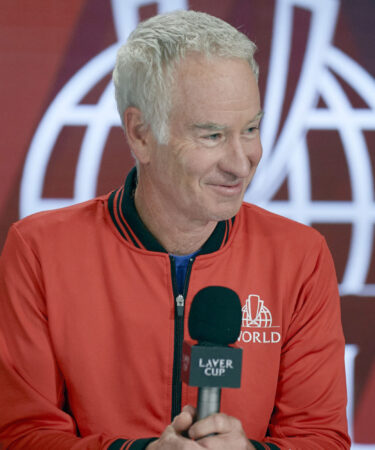July 11, 1982: The day McEnroe and Wilander battled in what was the longest tennis match in history at the time
Every day, Tennis Majors takes you back in time to relive a tennis event which happened on this specific day. On this day, July 11, 1982, John McEnroe and Mats Wilander battled for more than six hours in a historic Davis Cup encounter

What exactly happened on the day?
On this day, July 11, 1982, John McEnroe and Mats Wilander played what was, at the time, the longest match in tennis history. In a Davis Cup quarter-final held in St. Louis, Missouri, the two champions faced off in the deciding match on Sunday. John McEnroe prevailed after six hours and 22 minutes of play, 9-7, 6-2, 15-17, 3-6, 8-6, sending the American team into the final, and beating the record of the longest tennis match, which he already held since his 1980 six-hour and 15-minute loss against Jose-Luis Clerc. This record would remain unbroken until 2004 when Arnaud Clement and Fabrice Santoro would compete for six hours and 33 minutes at the French Open.
The players involved: John McEnroe and Mats Wilander
- John McEnroe: the Grand Slam winning champion with a temper
John McEnroe, born in 1959, was world No1 since August 1981, after he claimed his first Wimbledon title, defeating the Swedish legend Bjorn Borg in the final (4-6, 7-6, 7-6, 6-4). The left-hander from New York had amazed the tennis world since his first steps on the tour, in 1977, when at the age of 17, showing up at Wimbledon as an amateur, he came through the qualifying draw and made it all the way into the semi-finals.

“Mac” was very talented, his game was based on precision and touch on top of an iconic and lethal serve that he liked to follow to the net. In 1979, he became the youngest-ever US Open Champion, defeating Vitas Gerulaitis (7-5, 6-3, 6-3). He also created quite a stir by edging Bjorn Borg (7-5, 4-6, 6-2, 7-6) to win the WTC Finals.
In 1980, McEnroe played his most famous match in the Wimbledon final, where he lost in five sets against Borg, after winning an outstanding tie-break in the fourth set (18-16). In September, he managed to defend his US Open title, edging Borg in the final (7-6, 6-1, 6-7, 5-7, 6-4). In 1981, after his first triumph at the All England Club, McEnroe claimed the US Open crown for a third time, edging Borg once again in what would later be remembered as the last appearance of the Swede in a Grand Slam tournament (4-6, 6-4, 6-2, 6-3).
In 1982, he lost in the final at Wimbledon against a reborn Jimmy Connors (3-6 6-3 6-7 7-6 6-4). John McEnroe was known for his shocking on-court behaviour in the well-mannered world of tennis. His constant quarrelling with the officials made him famous in a gentleman’s sport.
- Mats Wilander: the teenaged Roland-Garros champion

Mats Wilander, born in 1964, had been very successful at a particularly young age. In 1982, at Roland-Garros, aged only 17 years and 10 months, he had become the youngest player ever to lift a Grand Slam trophy, edging clay-court legend Guillermo Vilas in the final (1-6, 7-6, 6-0, 6-4). He had also made himself famous for a memorable act of sportsmanship earlier in the tournament. In the semi-final against Jose-Luis Clerc, on his first match point, the Swede reversed a call that would have sealed his victory after the umpire had already announced “game, set and match”. Wilander was extremely consistent, and his physical conditioning was among the best.
The place: Checkerdome, St. Louis, Missouri
The 1982 Davis Cup quarter-final between the United States and Sweden was held at the Checkerdome, in St. Louis, Missouri. This stadium was built in 1929 and usually held team sports such as hockey, football and basketball. It could hold 18,000 spectators at full capacity. The Checkerdome would close its doors to the public in 1994, and would be demolished in the year 1999.
The facts: The match would go down to the wire
The Davis Cup quarter-final between the American team, led by John McEnroe, and the Swedish team, led by the young Mats Wilander, was level at 2-2 after the first four matches. In the opener, McEnroe had edged Anders Jarryd, 10-8, 6-3, 6-3, before Mats Wilander beat Elliot Teltscher in five sets, 6-4, 7-5, 3-6, 3-6, 6-0. On Saturday, McEnroe and Peter Fleming had outclassed the Swedish pair, Anders Jarryd and Hans Simonsson, 6-4, 6-3, 6-0. On Sunday, Jarryd had finally earned a point for his team by defeating Brian Gottfried, 6-2, 6-2, 6-4.
It was now up to the leaders to play a fifth match that would seal the outcome of the tie. In the final showdown between the Roland-Garros champion and the Wimbledon runner-up, it was McEnroe who got off to the best start. After he took the first two sets, 9-7, 6-2, he broke Wilander’s serve at 1-1 in the third and everyone thought McEnroe was cruising towards an easy victory against the Swedish teen.
But Wilander was no regular teenager. At 4-2, on the edge of defeat, he saved two break points, and then went on to break McEnroe’s serve and even the score: 4-4. McEnroe, seeing victory slipping away from his hands, started to lose control of his nerves and was now arguing on almost every line call. The players then held their serve for the next 23 games, until McEnroe eventually lost his serve and the set: Wilander sealed the set, 17-15. The game was on.
The fourth set, won 6-3 by the Swede, seemed very quick in comparison. In the fifth set, McEnroe relied on his serve (21 aces in total) to put pressure on his opponent. Eventually, the American left-hander managed to break Wilander’s serve at 7-6 to prevail in the longest match in tennis history.
The incredible length inspired interesting comments afterwards. McEnroe, reflecting on the match thirty years later for ESPN, commented, “I remember thinking near the end ‘If this match is so great, why are most of the people gone?”.
The answer came from the ESPN commentator, Cliff Drysdale: “People went out for dinner and when they came back they couldn’t believe the match was still going on.”
According to The New York Times, while Wilander simply said “I think I played well. I did what I could, I’m disappointed”, the American captain, Arthur Ashe, was more inspired: “McEnroe is entitled to go out and get drunk tonight.”
As for McEnroe, his comments after the match reflected his relief and his frustration at the same time: “At one point I thought it was going to go on forever and that’s frustrating. It’s tough to go out there against a 17-year-old and not know what to do next.”
What next? The McEnroe-Wilander record would be broken eventually
The United States would go on to clinch their 28th Davis Cup title, the fourth in the last five years, defeating France in the final, 4-1. It would be the last title claimed by the American team in the 1980s, who would not triumph in this competition again until a victory against Australia in 1990.
The record set that day by John McEnroe and Mats Wilander would be particularly hard to break after the tie-break was introduced in the Davis Cup in 1989. It would last almost 22 years, until Fabrice Santoro and Arnaud Clément played six hours and 33 minutes at the 2004 French Open. Their own record would then be erased from the history books in 2010 by the incredible Wimbledon first-round encounter between John Isner and Nicolas Mahut, which would last 11 hours and five minutes.









